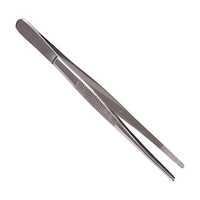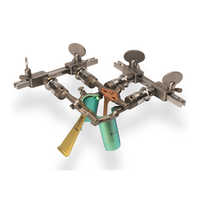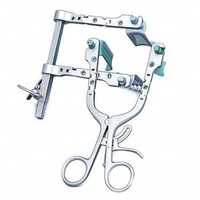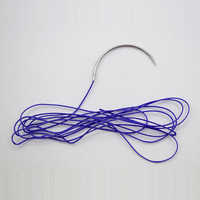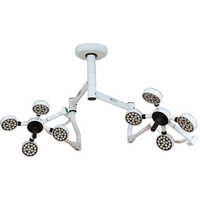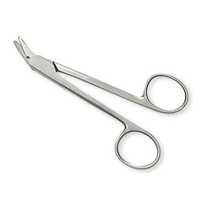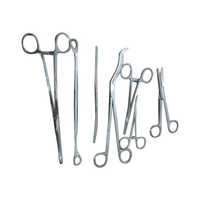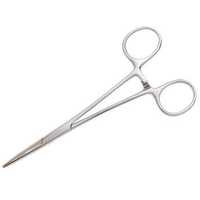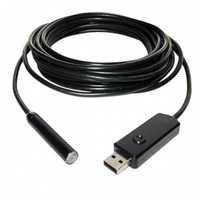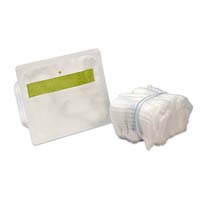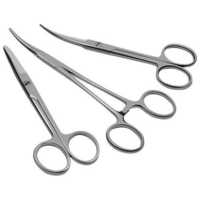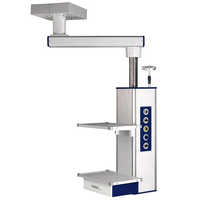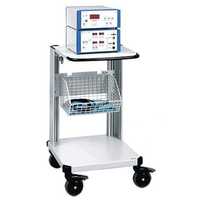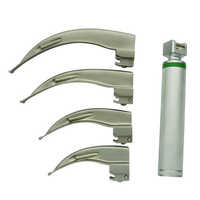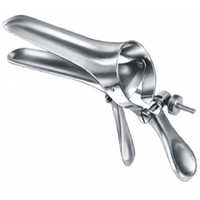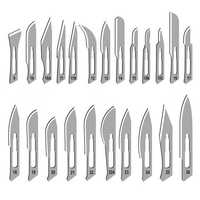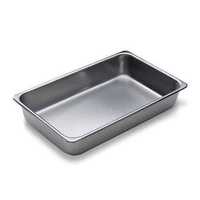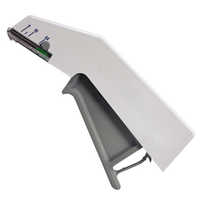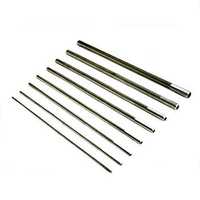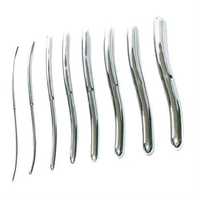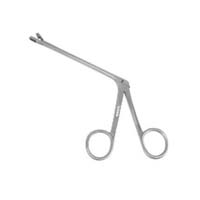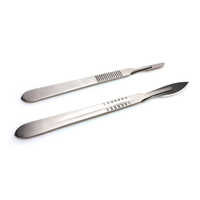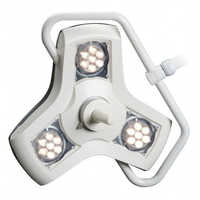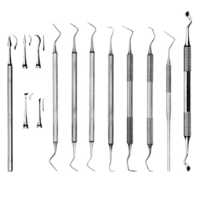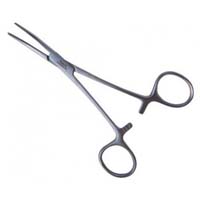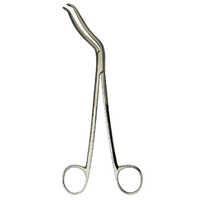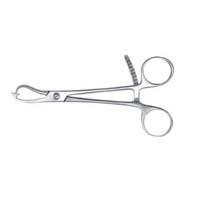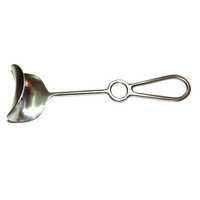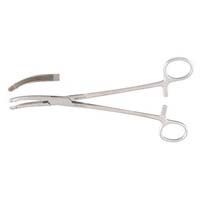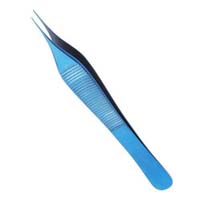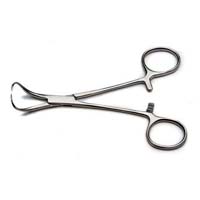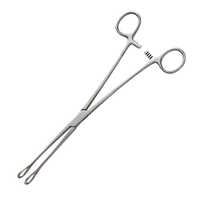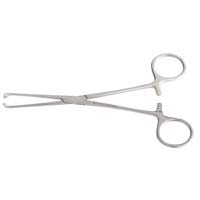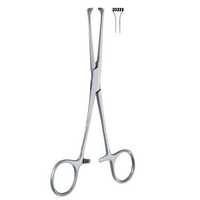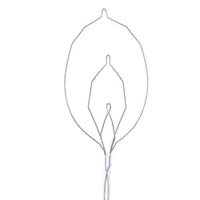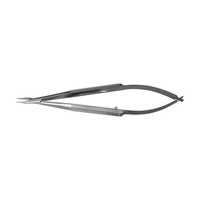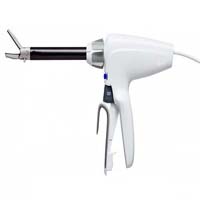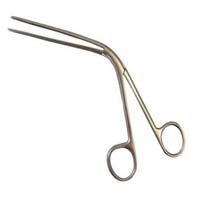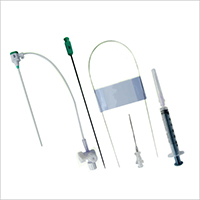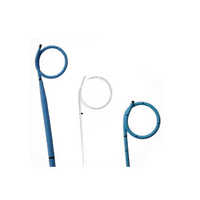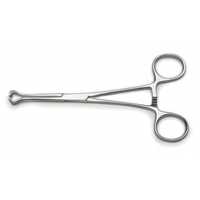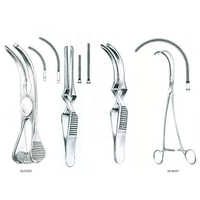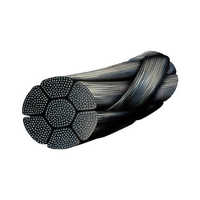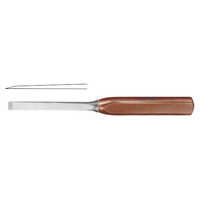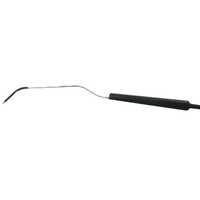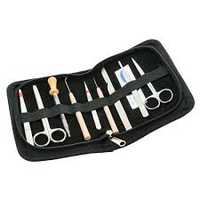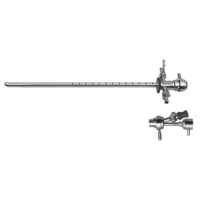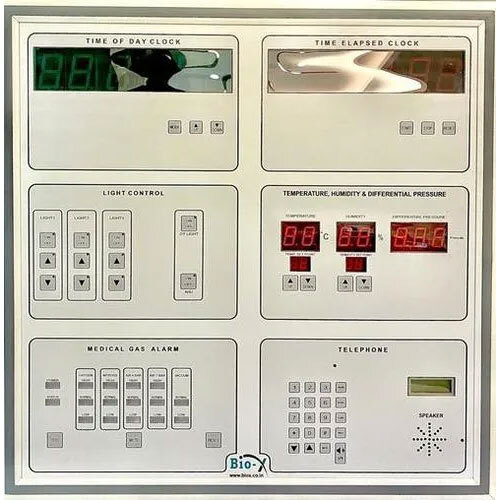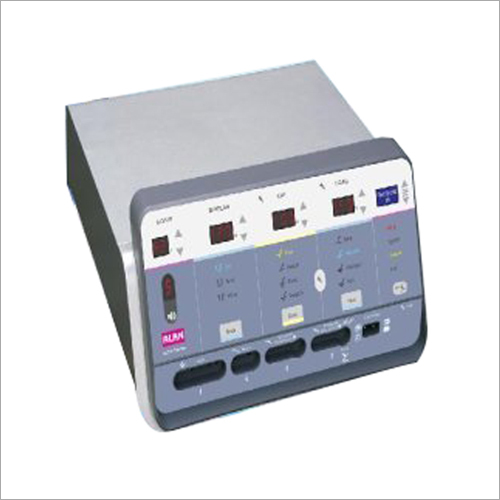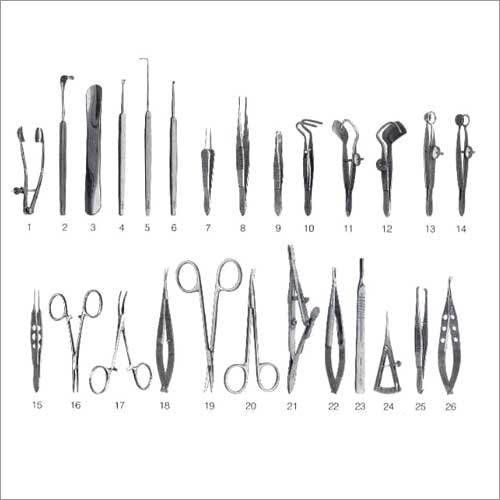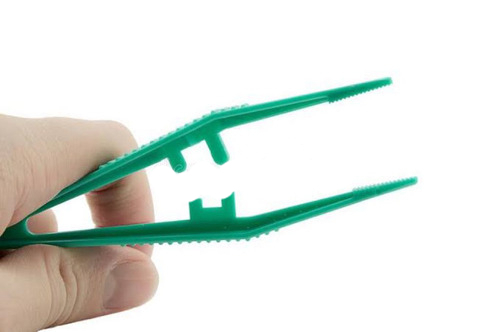Surgical Instruments
(7543 products)
Top Surgical InstrumentsCategories
Explore More Categories
Product Showcase
Steel Ophthalmic Products
Instrument - ENT Surgical Instrument
Material - Steel
Condition - New
5 Years
Business Type: Manufacturer | Exporter
M/S WONDER PRODUCTS CO
Eto Sterile Light Weight Disposable Tweezer Application: Industrial
Price: 3 INR (Approx.)/Piece
MOQ - 10000 Piece/Pieces
Instrument - Basic Surgical Instruments
Type - Tweezers
Material - Plastic
3 Years
Business Type: Manufacturer | Distributor
FUTURE MEDISURGICO
Addler Laparoscopic Bessanger Maryland 5Mm Small Size Instrument Dimension(L*W*H): 5 X 5 X10 Inch (In)
Price Trend: 1000.00 - 8000.00 INR (Approx.)/Piece
MOQ - 1 Piece/Pieces
Instrument - Other
Type - Forceps
Material - Steel
5 Years
Business Type: Manufacturer | Supplier
GOLDEN NIMBUS INTERNATIONAL
Semi-Automatic Pneumatic Brake Arm Pendant
Price: 150000 INR (Approx.)/Piece
MOQ - 1 Piece/Pieces
Type - Other, Arm Pendant
Material - Other, Aluminium extrusion
Condition - New
5 Years
Business Type: Manufacturer | Exporter
S.KUMAR ENGINEERING WORKS
Verified Exporter
( Accepts only Foreign Inquiry)
Indian Inquiries Only
Simple And Reasonable Design Surgical Skin Stapler
Type - Other, Skin Stapler
Condition - New
Portable - Yes
10 Years
Business Type: Manufacturer | Distributor
HEMANT SURGICAL INDUSTRIES LTD.
Surgical Mesh
MOQ - 100 Piece/Pieces
Instrument - Other
Type - Surgical Mesh, Other
Material - Other
3 Years
Business Type: Exporter | Trading Company
ANGUS HEALTHCARE
Verified Exporter
( Accepts only Foreign Inquiry)
Oxygen Concentrator Jmc5A Ni Recommended For: Hospital
Price: 46999 INR (Approx.)/Piece
MOQ - 10 Piece/Pieces
Drug Type - Other Types
Physical Form - Other
Function - Other
9 Years
Response Rate: 92.41%
Business Type: Manufacturer | Distributor
AKSHAR PHARMA
Verified Exporter
( Accepts only Foreign Inquiry)
Non Absorbable Sutures
Price: 555000 INR (Approx.)/Unit
MOQ - 10 Unit/Units
Type - Other
3 Years
Business Type: Distributor | Trading Company
A. D. SURGICAL
Plastic Syringe With Catheter Mount
MOQ - 100 Piece/Pieces
Instrument - Basic Surgical Instruments
Material - Plastic
Condition - New
2 Years
Business Type: Manufacturer | Distributor
UNISURGE ENTERPRISES PRIVATE LIMITED
Plastic Asahi Corsair Pro Microcatheter Guide Wire
Price: 38000 INR (Approx.)/Piece
MOQ - 50 Piece/Pieces
Equipment Type - Microcatheter Guide Wire
Material - Plastic
Condition - New
2 Years
Business Type: Distributor | Exporter
KRISHNA ENTERPRISES
Best Quality Single Use Disposable 35 Pin Skin Stapler For Surgical Purpose
Price: 250 INR (Approx.)/Pack
MOQ - 10 Pack/Packs
Instrument - Surgical Kits
Portable - Yes
Sterilized - Yes
4 Years
Business Type: Manufacturer | Exporter
ST. STONE MEDICAL DEVICES PVT. LTD.
Silver Nasal Cannula 25 Feet
Price: 1000 INR (Approx.)/Unit
MOQ - 1 Unit/Units
3 Years
Business Type: Manufacturer | Service Provider
MEDIKART HEALTHCARE SYSTEMS PVT. LTD.
Indian Inquiries Only
Steel Surgical Cloward Instrument
Price: 12500 INR (Approx.)/Piece
MOQ - 1 Piece/Pieces
Instrument - Gynecology Surgical Instrument
Material - Steel
Condition - New
2 Years
Business Type: Manufacturer | Exporter
BRONZ SURGICAL CO
Steel Abdominal Hysterectomy Set
Price: 42999 INR (Approx.)/Unit
MOQ - 10 Unit/Units
Instrument - Basic Surgical Instruments
Material - Steel
Use Type - medical use
2 Years
Business Type: Manufacturer | Distributor
SURGICAL WHOLESALE MART PRIVATE LIMITED
WSKMED Elastic Nail Surgical Instrument Set
Price: 115500.00 INR (Approx.)/Set
MOQ - 1 Set/Sets
Instrument - Other, Elastic Nail Surgical Instrument Set
Condition - New
Portable - Yes
5 Years
Business Type: Manufacturer | Supplier
YIN TECHNOLOGIES INDIA PRIVATE LIMITED
Verified Exporter
( Accepts only Foreign Inquiry)
Steel Hospital Surgical Instruments Kit
MOQ - 1 Unit/Units
Instrument - Surgical Kits
Material - Steel
Condition - New
2 Years
Business Type: Manufacturer | Distributor
VVM BIOTECH INFRA PVT LTD
Neuro Surgical Skull Clamp
Price: 435400 INR (Approx.)/Set
MOQ - 1 Set/Sets
7 Years
Business Type: Distributor | Trading Company
BHAGAWATI ENTERPRISE
Indian Inquiries Only
Plastic Crescent Bevel Down Micro Surgical Ophthalmic Knife
Price: 150 INR (Approx.)/Unit
MOQ - 100 Unit/Units
Instrument - Basic Surgical Instruments
Type - Knife
Material - Plastic
1 Years
Response Rate: 100%
Business Type: Manufacturer | Supplier
Optiedge India
Electrical Surgical Suction Machine Ingredients: Herbs
Price: 320 USD ($) (Approx.)/Set
MOQ - 500 Set/Sets
Instrument - Other
Type - Other
Material - Steel
3 Years
Response Rate: 97.78%
Business Type: Manufacturer | Exporter
ARAD. BRANDING
Surgical Instruments Manufacturers | Suppliers in India
| Company Name | Location | Member Since |
|---|---|---|
| Mn Life Care Products Pvt. Ltd. | Kolkata, India | 14 Years |
| Sai World Trade Link Private Limited | Ahmedabad, India | 14 Years |
| Surgitech Innovation | Karnal, India | 13 Years |
| Yash Care Lifesciences | Ahmedabad, India | 11 Years |
| Salvavidas Pharmaceutical Pvt. Ltd. | Surat, India | 10 Years |
| Hemant Surgical Industries Ltd. | Mumbai, India | 10 Years |
| Western Surgical | Rajkot, India | 9 Years |
| Akshar Pharma | Surat, India | 9 Years |
| Bhagawati Enterprise | Vadodara, India | 7 Years |
| Alan Electronic Systems Pvt. Ltd. | Ambernath, India | 6 Years |
The Basics of Surgical Instruments
Because there are thousands upon thousands of different surgical tools, it is not surprising that many people find it particularly difficult to try to understand what each one is and what it is used for. However, once you learn that surgical tools are fundamentally categorised by the type of operation being performed and how they are utilised during that particular surgical process, things get a great deal simpler.
It is not in any way exhaustive or conclusive, and you can see how certain categories may overlap with one another. However, it will provide you with an overview of the interesting diversity of technologies that are at the disposal of modern medical practitioners.
Basic Types of Surgical Instruments and Their Applications
1. Stapling and Suturing Surgical Instruments
Instruments for suturing and stapling are used in surgery to close wounds by joining layers of skin and/or other soft tissues together. Suturing kits typically include suturing material, a needle, a needle holder, toothed forceps, and fine suturing scissors.
Tungsten carbide jaws are used on instruments to prevent the needle from turning or twisting, increase the longevity of the instrument, and improve the user's grip and balance. Needle-protecting crosshatched serrations and smooth jaws are both useful, with the former utilised for smaller needles like those used in cosmetic surgery, and the latter for more robust procedures.
Among the tools that fit this description are staplers and clip appliers. Terminal end, internal anastomosis, and end-to-end stapling are all possible using a stapler.
2. Cutting and Dissecting Surgical Instruments
Surgical instruments for cutting and dissecting awide variety of Surgical instruments are used to cut skin, soft tissue, and even bones, and to dissect tissues along their anatomical planes. Some of these tools, like scalpels and blades, are one-time-use only, while others, like knives, can be used again and again.
Blades of varying sizes must be utilised in order to complete the various duties. Tonsillectomy is performed by otolaryngologists using blade 12, and large arteries like the aorta are punctured by vascular surgeons using blade 11. Blade 12 is used for tonsillectomy.
Metzenbaum scissors, which are used by plastic surgeons to cut intestinal mesentery, are constructed for cutting delicate tissues, whereas Mayo scissors, which are used by obstetricians and gynaecologists to cut ligaments, are meant for cutting robust tissues. Mayo scissors are used to cut ligaments.
Common instruments in this category include the bone curette, which is used by both neurosurgeons and orthopaedic surgeons during laminectomy during intervertebral disc procedures. Snares, bunches, blunt dissectors, Bone cutters, and biopsy forceps are also examples of instruments used in surgery for cutting and dissecting.
3. Retracting and exposing instruments
Retractors help surgeons see more of the operating field by retracting and exposing devices. Using these tools, surgeons may safely pull out tissues without causing any damage. The Balfour abdominal retractor is one type of device frequently used in laparotomy for this purpose.
The Army navy and the retractor are two further instances. The GELPI retractor is only one example of a self-retaining retractor that helps to improve visibility in the operating field. The sternotomy bone retractor known as a finocchietto is a crucial tool.
Wide-flap dissection, as in a mastectomy or facelift, requires the use of hooks, such as skin, bone, or spays hooks, to retract skin margins. To reduce the risk of tissue damage, the points of certain of these hooks are rounded.
4. Grasping and handling surgical instruments
Surgeons employ certain equipment to grab or hold tissues, allowing them a better view of their operating field. Forceps including smoothing forceps, toothed forceps, Allis forceps, tissue forceps, Babcock forceps, and stone forceps, tenaculum, and bone holds are the most common surgical devices used for this purpose
. General surgeons frequently employ rat teeth forceps, which are used to grab skin. Obstetricians use the Allis forceps for colporrhaphy and the Babcock forceps for grabbing intestine and towels anterior and posterior repair.
5. Dilating and probing instruments
Dilating instruments are used to enlarge an opening, such as the cervical os or the urethra, whereas probing instruments are used to examine the area. Surgeons begin with a smaller dilator and work their way up to a larger one as they widen the opening.
However, probes are used to examine areas that can only be accessed by natural openings, such as the urethra, vagina, and common bile ducts. Surgical probes can be used to listen to the urethra or the uterus, for instance.
6. Suctioning and aspiration instruments
Instruments for suctioning and aspirating Blood and other fluids can accumulate in surgical and dental fields, making it difficult to see what's beneath the surface.
Therefore, surgeons employ specialised equipment, such as the Poole abdominal tip used in laparotomy, the Frazier tip used in brain and orthopaedic operations, and the Yankauer suction tip used in oropharyngeal procedures, to drain these fluids from the surgical field.
7. Instruments for improving visualization
Tools for better imaging: specialised equipment lets researchers peer inside otherwise inaccessible structures. Examples of such instruments are specula, endoscopes both hollow and lens endoscopes, anoscopesfor viewing the anus, and proctoscopes for viewing the anus and rectum.
8. Clamping and occluding surgical instruments
Instruments for clamping and occluding tissue are primarily used to move blood arteries and other tissues out of the way during surgery. Hemostats, crushing clamps, hemostatic forceps, and non-crushing vascular cramps are all examples.
Surgical Instruments Maintenance & Disposable
Maintenance and disposal guidelines for surgical instruments:
Among the many types of medical equipment and supplies, surgical disposables are among the most widespread. Some items are designed to be used just once before being thrown away. There has been a steady rise, however, in the number of people who choose to reuse disposable items.
Infections can be transferred between patients and healthcare workers if surgical disposables are handled improperly.
As a result, stringent regulations regarding the use of surgical disposable items must be followed by all healthcare facilities. The laparoscopic and endoscopic instruments are particularly challenging to disinfect.
Microorganisms may still be attached to instruments after thorough cleaning, even if medical facilities follow manufacturers' instructions.
Surgical instruments and supplies are sterilised in autoclaves, also called steam sterilisers. It aids in sterilisation by eliminating the need to store biohazard wastes near surgical instruments.
In order for an autoclave to produce steam, the right kind of water must be used. While regular tap water can be used in a pinch, its high mineral concentration may prevent effective cleaning of surgical equipment.
After use, surgical disposables become biological waste. Because of this, they require special handling when being discarded. Here are some suggestions for properly discarding them.
- Discarded objects must be stored in a location where they won't be discovered by patients or staff.
- The disposal of biomedical waste should be performed only by trained professionals.
- To prevent confusion with regular trash, biomedical waste containers should be clearly labelled.
- The waste containers should be appropriately sized for the individual exam rooms in which they are located. As the number of patients in each bin decreases, doctors will be more careful. When throwing away a specific kind of trash, you should use a specific can.
Surgical instruments market size in india
i. Overview
From an anticipated $ 630 mn in FY 2021, the market for minimally invasive surgical devices in India is expected to increase to an estimated $ 880 mn by FY 2026. The growing senior population is a key factor in the development of the minimally invasive surgical equipment market in the country. The fact that minimally invasive surgeries leave far less scars than open ones is also predicted to fuel market expansion through FY2026.
ii. Key Target Audience
- Makers, sellers, and brokers of minimally invasive surgical tools
- Institutions of government, including policymakers and regulators,
- Groups, conferences, and coalitions that concentrate on minimally invasive surgical tools
- Consulting and research firms in the market
Surgical instruments are devices that have been clinically and accurately made in accordance with their unique designs in order to assist the surgeon in the process of doing surgery. In order to successfully complete a surgical procedure, one needs access to a wide variety of devices. The specialists are able to receive assistance at various stages of the procedure from the many distinct kinds of surgical devices.
FAQs: Surgical Instruments
Q. What is the most common surgical tool?
Ans. Ratcheted Forceps, scissors, Forceps, clamps, retractors, Babcock, Lane Tissue Forceps, cautery, Artery forceps are the common surgical tools.
Q. Which laryngoscope is most commonly used?
Ans. The most commonly used laryngoscope is curved Macintosh blade. To shift the tongue laterally to the right, this is placed in the mouth on that side.
Q. What lights are used for surgery?
Ans. Incandescent Lights, Tungsten-Halogen Lights, LED Lights are used for surgery.
Q. What are the endoscopy accessories?
Ans. Endoscopy accessories are Biopsy, Endoscopist, Endoscopy, Digestive Endoscope etc.
Q. What microscopes are used in surgery?
Ans. Operating microscope are used in surgery, it is specialised optical microscope that is essential for microsurgery.
Related Categories
Adult Diapers
Autoclaves & Sterilizers
Ayurvedic Therapy Equipment
Blood Pressure Monitors
Cold Chain Equipment
Dental Equipment & Supplies
Diagnostic Equipment
Disinfection Equipment
Disposable Gloves
ECG Machines
ENT Equipment & Supplies
First Aid
Gloves & Mittens
Health Care Equipment
Hearing Aids
Hospital Beds
Hospital Equipment
Hospital Furniture
Hospital Holloware
Hospital Uniforms
ICU Equipment
IV & Infusion Set
Imaging Equipment
Laparoscopic Instruments
Medical & Hospital Disposables
Medical Equipment
Medical Gases
Medical Implants
Medical, Diagnostic & Hospital Supplies
Needle & Syringe Destroyer
Needles & Syringes
Obstetrics & Gynecology Instruments
Ophthalmic Instruments
Orthopedic Equipment
Orthopedic Implants
Orthopedic Supplies
Orthopedic Surgical Instruments
Oxygen Setup
Personal Safety Equipment
Physiotherapy Equipment
Pulse Oximeters
Rehabilitation Aids
Surgical Dressings & Disposable
Surgical Instruments
Temperature Instruments
Ultrasound Machines
Veterinary Equipment
Veterinary Products
Walking Aids
Wheel Chairs
X-Ray Chemicals
X-Ray Machine
